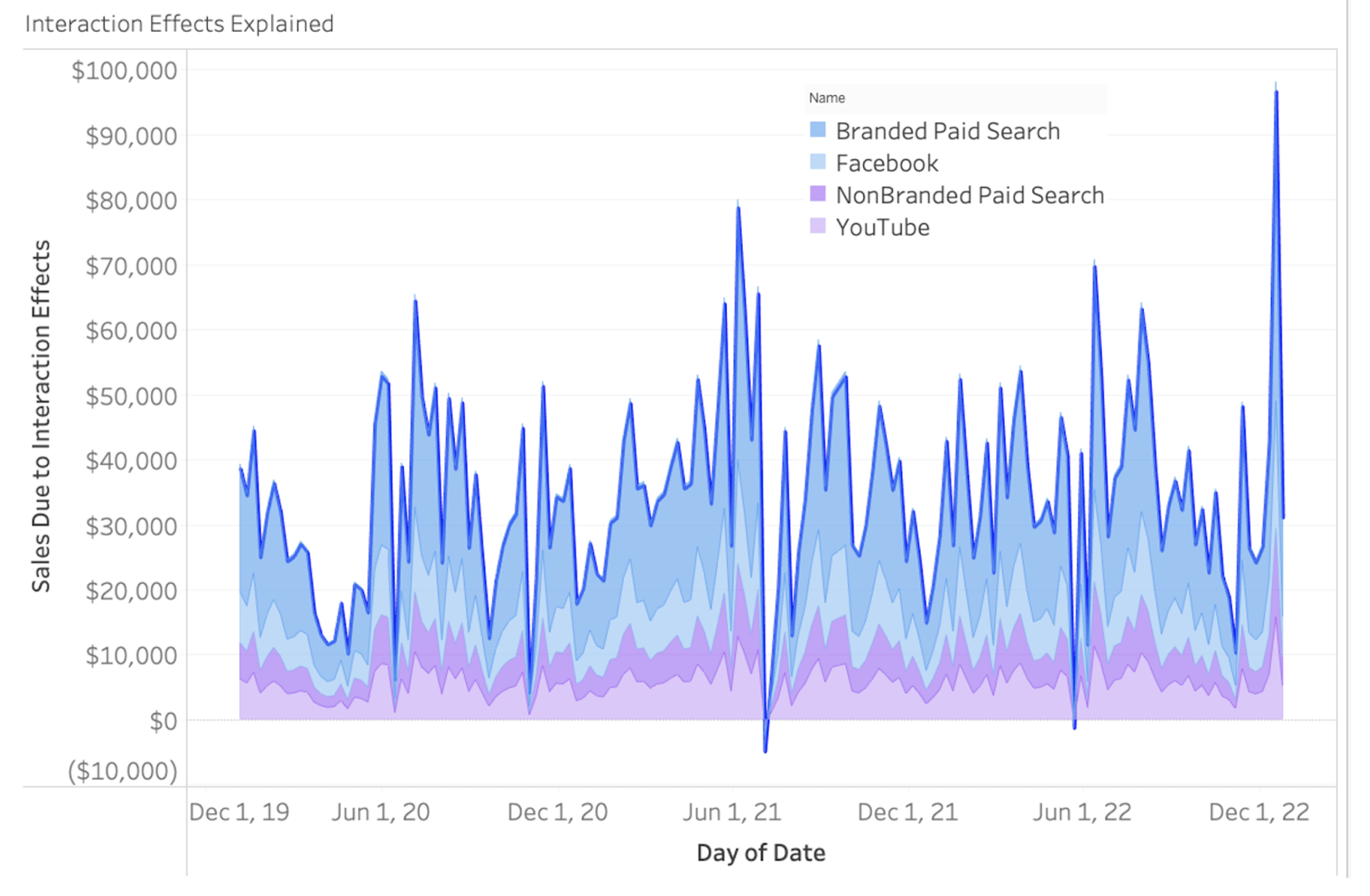Deciphering Unified Marketing Measurement

If you are interested in measuring the effectiveness of your marketing dollars, then you are likely familiar with Marketing Mix Modeling (MMM) and Multi-Touch Attribution (MTA) modeling. Need a little refresher? Feel free to check out the following Bounteous blogs for refreshers on MTA and MMM. Even if you are confident that you understand both the use cases and the inner workings of MMM and MTA, you may be less confident in answering the following questions:
- “Which approach should I use (MMM or MTA)?”
- “Should I be using both (MTA and MMM)?”
- “Is there a way to combine both MMM and MTA?”.
The focus of this blog will be on the final question, and the answer is…Yes! There is a way to combine MMM and MTA, and it is through Unified Marketing Measurement. Unified Marketing Measurement, as the name implies, is a way to bridge the gap between MMM and MTA into one unified model. To quote Google, “Unified Marketing measurement is a framework that maximises the use of available data sources to create a single truth, suitable for actionable steering.” Over the last year, Bounteous’s data science team has developed a Unified Marketing Measurement model and built a perspective on the benefits of UMM.
MMM, of course, is a great way to explain what fraction of our sales are due to different marketing channels and the corresponding return on investment from these channels. We do this by building a model that predicts sales based on different marketing spends over time. An example of an MMM’s actual vs. predicted sales values are shown below.

Figure 1: Actual vs. Predicted Sales
From this, we are able to estimate sales due to both marketing and non-marketing factors in a more detailed fashion (shown below).

Figure 2: Estimated sales due to various marketing and non-marketing factors
A fraction of our sales due to marketing are attributed to “Interaction Effects” that are interactions between channels (example the combination/interaction of branded paid search spend and Facebook spend or non-branded search spend and YouTube spend). These interactions provide valuable insights into the combined effects of a multi-channel marketing strategy and are an essential part of a MMM. An example of their usefulness, and limitations, is described below.
Limitations of a Single Modeling Approach
Imagine a scenario where a potential customer sees your ad on YouTube and then performs a non-branded search for your product and clicks on your ad. Two likely questions might be:
- Is the customer more likely to purchase your product after interacting with both ads than if they had only interacted with the YouTube ad or the non-branded paid search ad?
- Which had more effect on the decision to purchase, the YouTube ad or the non-branded paid search ad?
Using a standard MMM approach, we are able to answer the first question by measuring the interaction effects between combined channels (shown below).

Figure 3: Estimated sales due to Interaction Effects between marketing channels
However, the second question is not answered through MMM alone (enter the need for UMM).
Combining of Two Models
Through UMM, we are able to utilize attributed conversions from MTA to estimate revenue from the individual channels that make up these interaction effects (example YouTube and non-branded paid search).

Figure 4: Multi-Touch Attribution predicted conversions by channel
By incorporating MTA attributed conversions, we no longer have to settle for statements like “10% of sales are due to interaction effects between channels” (example). Instead we are able to say with confidence something to the effect of “10% of sales are due to interaction effects between channels, of which 5% is due to channel 1, 25% is due to channel 2 and 70% is due to channel 3” (example).

Figure 5: Sales due to Interaction Effects between channels broken down by individual channels
Perspective
At Bounteous, our perspective is that a good model should be both accurate and explainable. Unified Marketing Measurement is a valid approach to measuring marketing effectiveness and will make your model more explainable. Through Unified Marketing Measurement, you are able to gain a deeper understanding of the effectiveness of your marketing strategy than you would through MTA or MMM alone.
